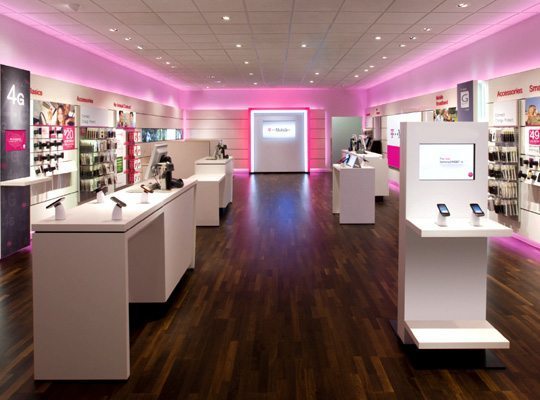Having recently closed on its acquisition of 700 MHz spectrum assets from Verizon Wireless, T-Mobile US has begun touting the benefits those licenses will provide to consumers.
In a blog post, T-Mobile US CTO Neville Ray said the carrier expects to being taking advantage of the new licenses by the end of this year, providing customers with better in-building and geographic coverage. T-Mobile US’ LTE network currently relies on its 1.7/2.1 GHz spectrum holdings that while covering more than 200 million potential customers, lacks the in-building and propagation characteristics of sub-1 GHz spectrum.
The deal with Verizon Wireless, which was announced earlier this year, had T-Mobile US acquiring highly-coveted low-band 700 MHz A-Block spectrum licenses for $2.365 billion and the transfer of some 1.7/2.1 GHz and 1.9 GHz spectrum licenses that T-Mobile US valued at $950 million. The two carriers also noted that they would “realign spectrum blocks in certain markets, primarily in northern California and the Atlanta area.” T-Mobile US noted that the deal will result in the carrier controlling sub-1 GHz spectrum licenses in 21 of the nation’s top 30 markets and approximately 158 million potential customers. T-Mobile US had previously controlled a 700 MHz A-Block license covering Boston, and with the new deal adds coverage to New York, Los Angeles, Dallas, Houston, Philadelphia, Atlanta, Washington D.C., and Detroit.
T-Mobile US in March announced plans to begin re-farming its 1.9 GHz spectrum currently hosting its 2G service to support its LTE network that it expects to further broaden its coverage. The carrier claims that its network, including both LTE and 2G/3G services, covers more than 280 million pops, with its LTE network expected to cover 250 million pops by year-end.
T-Mobile US said it currently offers up to 20 megahertz of spectrum support for LTE services in 43 of the nation’s top 50 markets, and said it plans to offer up 40 megahertz of spectrum support – thanks to its acquisition last year of MetroPCS – in approximately 90% of the top 25 markets beginning later this year.
Verizon Wireless claims its LTE network covers more than 300 million pops, nearly matching the footprint of its legacy CDMA network; AT&T claims its mobile operations cover 280 million pops with LTE service in its way to 300 million pops by year end; while Sprint announced this week that its LTE service covered 225 million pops on its way to 250 million pops by mid-year.
Bored? Why not follow me on Twitter


